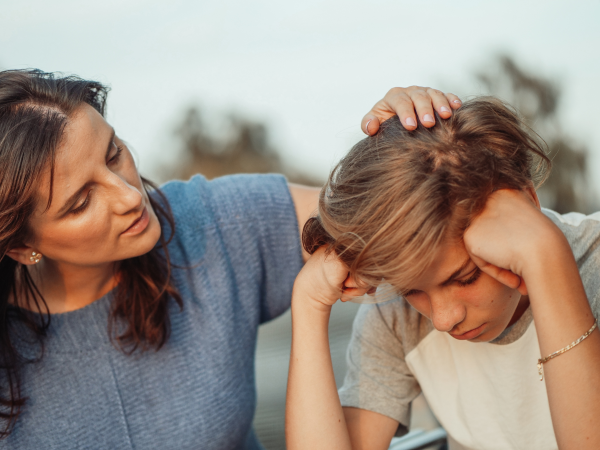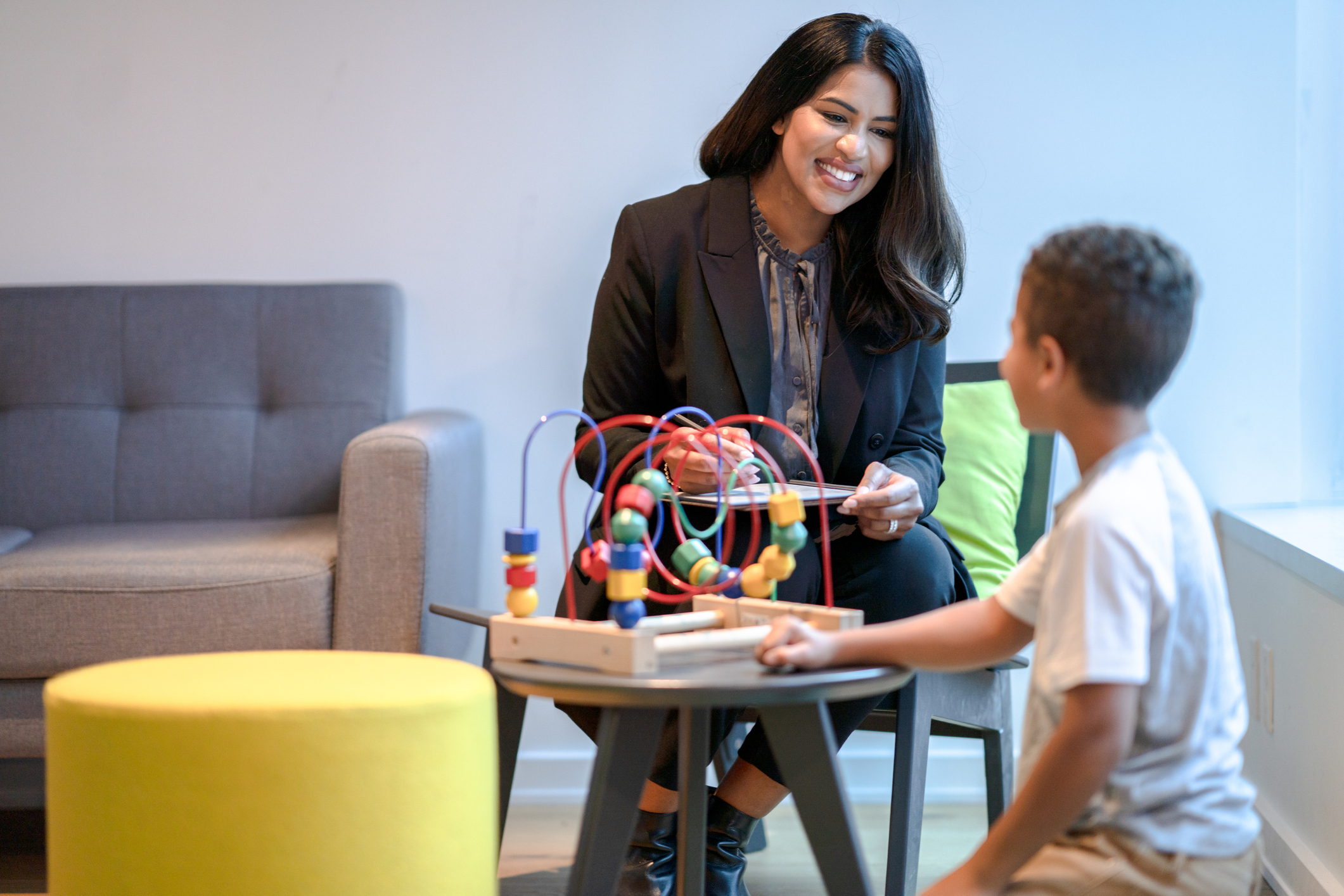As a professional and mom to two teen boys, the mere mention of “May” raises my stress level. It’s school projects, finals, AP exams, tryouts for club and school sports, graduation festivities, sports banquets, fundraisers, honors/awards assemblies, planning summer schedules, etc. – “all the things” in one month. These activities and milestones can be wonderful, worthy of celebration. And at the same time, navigating all of them within one month feels overwhelming, contributing to mental burden for both my boys and me. I take on the role of cheerleader each morning and afternoon, but who am I kidding? My words of encouragement to my boys are also a constant self-reminder to take a deep breath and focus on one thing at a time. So, I think it’s only fitting that May is Mental Health Awareness month.
My personal experience aside, youth mental health awareness is a critical conversation. Mental health refers to our emotional, psychological, and social well-being. In my last blog, I discussed the alarming rates of youth who are experiencing stress (81%) and burnout (27%). Globally, higher numbers of children and teens are reporting clinically elevated anxiety (20.5%) and depression (25.2%). In the United States, 20% of teens have seriously considered suicide in the past year. And these are only a few of the mental health concerns that youth experience. You can find more information on rates of mental health concerns in youth here. In short, about 1 in 7 youth ages 3-17 have been diagnosed with a mental health condition.
Let’s explore some practical ways to support youth behavioral health during a busy season, such as May, as well as throughout the year. Yes, I’ve been referring to mental health above but intentionally mention “behavioral health” here. We are complex humans who live in a complicated world, and many things can affect our mental health. I want to broaden the scope for how we think about youth mental health. Behavioral health includes mental health but also integrates resilience and well-being, health promotion behaviors (e.g., sleep, physical activity), life stressors, and substance use. In short, behavioral health is the connection between a person’s behaviors and the health and well-being of the body and mind.
Here are 5 practical ways to support behavioral health in children and teens:
- Create a safe space, free from judgement, for youth to talk about what they think and how they feel. Ask open-ended questions to facilitate conversation so that you can learn more about what is happening and how they are feeling. Acknowledge and validate the youth’s experience. This lets the youth know that you’ve heard them. There is a lot going on in our world. As adults, we often struggle to process what is happening and how we feel about it. A developing brain has even more difficulty making sense of it. If you initiate frequent conversation with youth about life in general, it is easier to then address the hard things, too. Feeling like no one understands you and feeling alone are linked to suicidal ideation. Providing a safe space for youth to be honest and vulnerable about what they are thinking and feeling can mitigate risk for youth. There are also safe spaces online to share your mental health journey, which can reduce feelings of isolation and stigma.
- Encourage rhythms for daily health behaviors that reduce stress and promote physical and mental well-being. These might include good sleep hygiene, limits on screen use, movement goals, etc. The mind and body are well connected, and when we respect our physical needs, we build resilience for our mental health.
- Model healthy behaviors. Even though they don’t always admit it, youth look to caregivers, teachers, community leaders, and other adults for information on how to navigate life. If a youth sees you reaching out to a friend for support, taking a yoga class, or choosing nutrition dense foods to fuel your mind and body, they may be more likely to do the same. Similarly, when you are present in the moment (put down your phone) and engage the youth in a face-to-face conversation (not texting), the youth interprets your behavior as – I have your undivided attention, I am important to you, and you are taking the time for me. Not to mention, you are modeling healthy communication skills (e.g., eye contact, joint attention). But, to have the mental energy to interact with our youth in this way, we must also promote our own health (e.g., getting enough sleep, stress management, etc.).
- Identify and promote the use of positive coping strategies. Support the youth in making a list of possible coping strategies. It is helpful to consider what has worked/not worked for them in the past and known helpful strategies. Gently prompt use of a strategy when you notice sadness, anger, frustration, etc. Creating this resource during a non-stressful time is helpful for several reasons, including better capacity for creativity and brainstorming, and easier access for future stressful or crisis situations.
- Make a plan. When a mental health concern is identified and/or life is stressful, feeling like you don’t have control can be overwhelming. By creating a plan of what can be done to support the youth, uncertainty is reduced. There is comfort in knowing what the plan is. Monitor the youth’s functioning and make note of any changes. Consider what resources the family has, what they need, what supports are available at school, when the family would seek professional help, etc. Write down the plan and talk about it as a family. Even if services are not currently needed, it’s helpful to be equipped with information that might be useful in the future.
Create a safe space |
|
| Ask open ended questions | What have you noticed that triggers your anger? |
| Validate the youth’s experience | That is a lot. It is understandable that you feel overwhelmed. |
| Acknowledge concerns you see in the youth | I’ve noticed you seem down lately. What has been bothering you? How can I help? |
| Initiate conversation about general life | What has been happening around you lately? What are your thoughts? How does that make you feel? |
Encourage rhythms for daily health behaviors |
|
| Sleep hygiene | Get 8-10 hours of uninterrupted sleep each night |
| Limit screen time | Create routine screen breaks (e.g., during meals) and have face-to-face conversation while you eat. |
| Set goals for daily movement | Swim, play basketball, lift weights |
Model healthy behaviors |
|
| Be attentive and present in the moment | Tell me about your day. |
| Stay active | Take a walk, invite the youth to go with you |
| Monitor what goes into your body | Choose lean proteins (chicken, beans, lentils), fruits/veggies, and whole grains. Limit alcohol use. |
| Emphasize the value of positive social connection | Call or meet a friend |
Identify and promote positive coping strategies |
|
| Personal experience | What have you done in the past that you noticed helped you to feel better? |
| Known strategies that work – what research tells us | Would you be willing to try relaxation, meditation, engaging in creativity (e.g., art, music), physical activity, doing something you enjoy, etc.? More examples of positive coping strategies can be found here. |
| When you notice concerns, prompt use of a helpful strategy | I’ve noticed something is bothering you. Would it help to take a break and call a friend? |
Make a plan |
|
| Monitor the youth’s functioning | Keep track of changes in mood, stress level, increased anger, any changes in habits, and ask the youth about any changes. |
| Find out what resources are available | Look into local behavioral health services, support groups (online or in person), national online resources (e.g., 988 Suicide and Crisis Lifeline), education about a specific mental health concern. |
| Document the plan | As a family, talk about what resources are available, and write out a plan. This can be difficult for families, especially if they don’t know where to start or a youth does not want to be involved. In these cases, it can be helpful to consult with a professional. |
Previous blogs available from PracticeWise that support youth mental health.
- Health behaviors related to sleep, nutrition, screen time, and physical activity
- Using Positive Psychology to boost wellbeing
- Stress management
- How to navigate difficult conversations
- How to find behavioral health services
—
About the Author
Janelle Wagner Ph.D., serves on the Professional Development Team as an Associate Trainer and Senior Consultant for PracticeWise. Learn more about Dr. Wagner on the PracticeWise team page.







